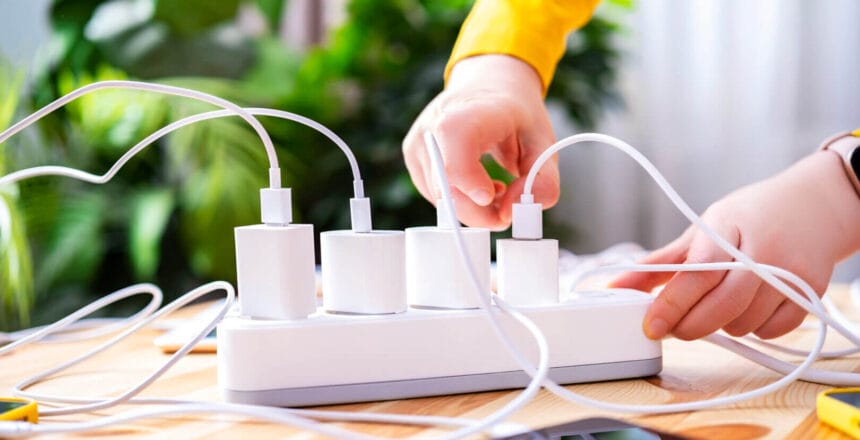The number of energy-efficient, smart devices that make our lives convenient can seem endless. An average household may include virtual assistants, smart phones and televisions, video doorbells, and automated appliances, to name just a few.
Yet if you are not watchful, multiple devices, usually running simultaneously, can drain energy and have the converse effect of adding to your electric bill. The cost increases might seem negligible at first, but incrementally they add up to a significant increase over time.
A common contributor is leaving smart devices in standby, or sleep mode, while your home is unoccupied. A device in sleep mode continues to consume energy. Taking simple steps such as shutting down and unplugging devices, and changing settings on others, can greatly increase energy conservation.
Smart devices in standby mode require electricity to stay connected to your home network. A voice-activated speaker could potentially consume 2 to 4 watts of electricity and modern, smart TVs up to 3 watts. Being sure to completely turn off the TV and shutdown or unplug a virtual assistant can avoid unnecessary energy use.
Automated occupancy sensors and smart lighting are also great examples of the need to be vigilant to prevent inadvertent energy consumption when away from home. Motion detectors set at high sensitivity levels can cause lights to switch on and off multiple times. For instance, they might be triggered every time your dog or cat stirs. Multiply that by the number of rooms in the house if they like to wander.
Automated timers must be in-sync with your schedule. Otherwise, lights could be activated when no one is home. Some smart lighting systems can be changed in real-time using an App on your smart phone.
Efficient motion sensor adjustments also come into play with smart doorbells that record video. A small reduction in the motion detector setting can prevent reactions to minor motions, like passing cars or someone walking their dog past your house.
Proper use of smart thermostats is another excellent practice to increase energy-efficiency. You can adjust thermostat settings to align with your schedule and home occupancy to maximize energy-efficiency. Maintaining low temperatures so that your house remains cool while you are away is not necessary or energy efficient. There are exceptions, such as giving pets enough cool air so that they do not fall ill during extreme heat.
Consider making a smart device checklist to review before leaving the house empty. In addition to the energy-saving methods mentioned earlier, a to-do-list could include optimizing energy savings by turning off smart washers/dryers, dishwashers and refrigerators, or setting them to eco mode if available, and adjust settings on home security cameras.
Taking time to run through a few easy steps before leaving the house can substantially reduce energy consumption. From using energy-saving modes on air conditioning systems to unplugging virtual assistants and checking to make sure devices are shut down instead of left in standby mode, there are many things that you can do to help the environment and lower your utility bills.

